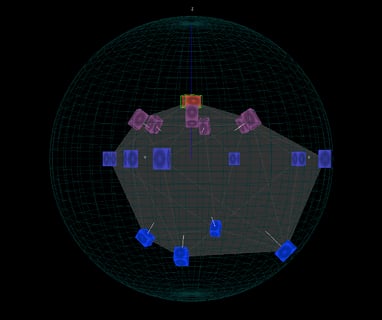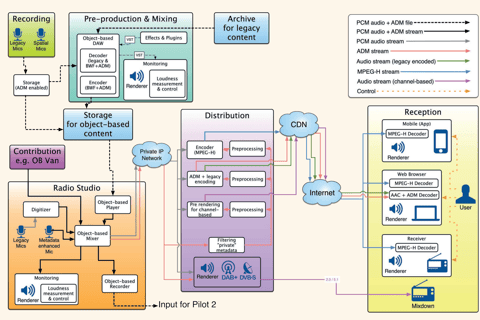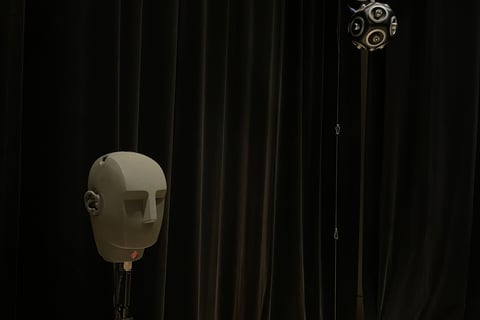Immersive audio formats comparison - VBAP vs Ambisonics
Audio Objects workflow for Radio Broadcasting
If there is one area of entertainment that has been over looked it is audio. While in the video department people have been hard at work on developing the best picture and the best effects the audio has remain relatively unchanged regarding the technology and how users enjoy it. In the audio department two big areas are currently in development for better experiences: the cinema experience and the gaming and home usage using headphones. The two areas are very different quite opposite, with one using a lot of loudspeakers and with the other one using just headphones. The cinema experience has always been the place to watch a movie. The sound system was and it still is better than the one that consumers have at home. The speakers usually are larger ,bigger and better placed than in a regular living room. In this area the leading company is Dolby. Currently the Dolby Atmos is being pushed as the new industry standard with other technologies providing more or less the same result.


The science of object-based audio is concerned with a new way of conveying spatial information moving away from channel-based systems towards an approach that processes audio independently of the device it is being rendered on. These object- based systems treat audio elements as objects which are linked with metadata that describes their behavior. When developing immersive audio for Radio one of the concerns is how to manage audio objects and also stream. MPEG-H proved it can handle this task when it was implemented for TV broadcast in South Korea and later in 2018 in Norway. (“Successful Demonstration of Interactive Audio Streaming using MPEG-H Audio at Norwegian Broadcaster NRK – Fraunhofer Audio Blog,” n.d.) The R&D team at the BBC chose MPEG-H while developing the Orpheus Project. The main task of this technology will be distribution, in house as well as outside the radio studio in broadcasting.
The graphic showed is a proposal of how to produce and handle Audio Objects in a radio studio that was presented in St.Pölten, Austria cited on this page. This technology allows more interaction with the user and more flexibility for the radio station regarding content and format.


Immersive audio for VR


McGill University - Montreal
Sankt Poelten University - Sankt Poelten, Austria
Sankt Poelten University - Sankt Poelten, Austria
Virtual Acoustics system implementation - ongoing
McGill University - Montreal


Virtual Reality offers a controlled environment for mimicking real-life scenarios with little to no risk for the person in it, ideally accompanied by true to life audio. Helping to create the sensation of immersion, transporting them into a deeper and more thrilling audio-video experience. The development of VR has spurred a deeper investigation into the potential of delivering audio to consumer. However, as the technology of VR headsets improves, audio playback is still mostly limited to headphone use. Building on previous research that shows the advantages of playing back spatial audio over loudspeakers, in my doctoral work I will show how a VR user can experience immersive audio with just two speakers making 3D audio more accessible for the wider public and why this is more desirable than headphone playback.
McGill’s Virtual Acoustics Technology (VAT) offers new solutions in the key areas of room acoustics serving musical performance by focusing on the electro-acoustic coupling between existing room acoustics and simulation acoustics.
Reworking the signal flow of radio stations in Vienna to offer better flexibility and more customisations for the end users.